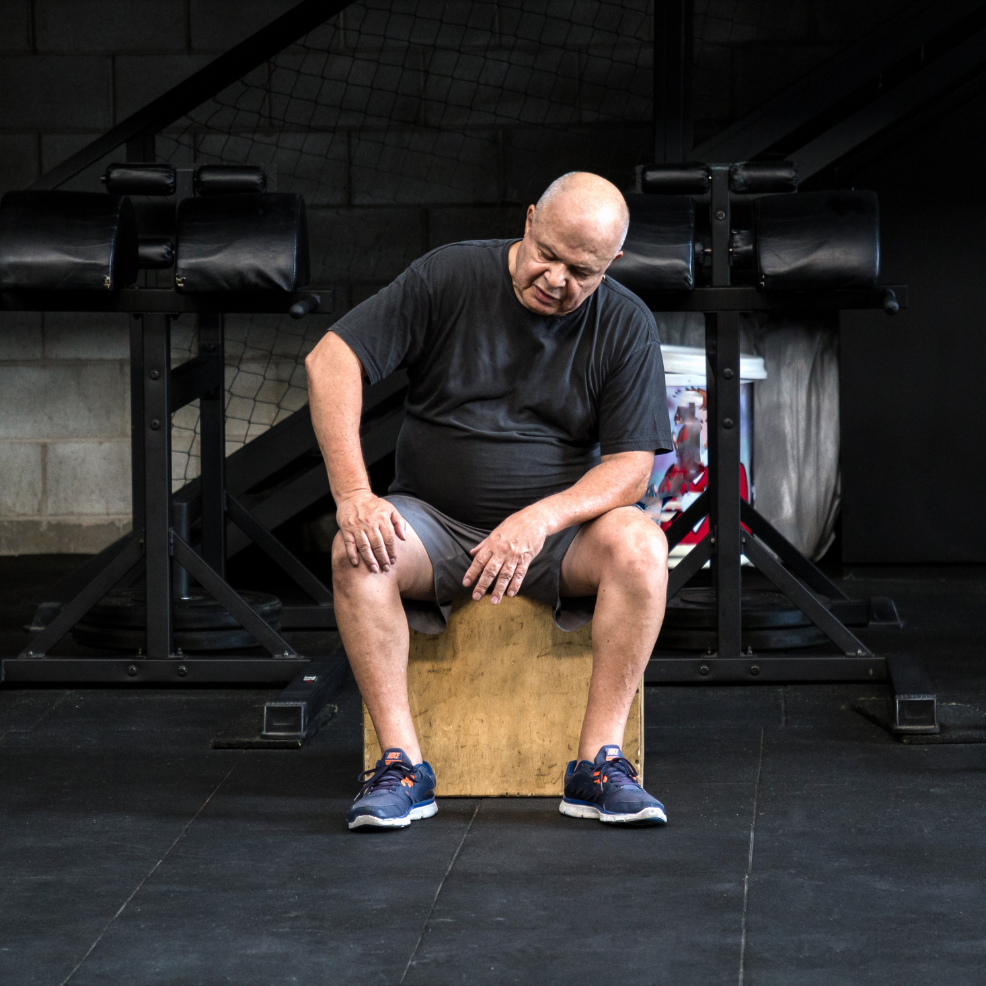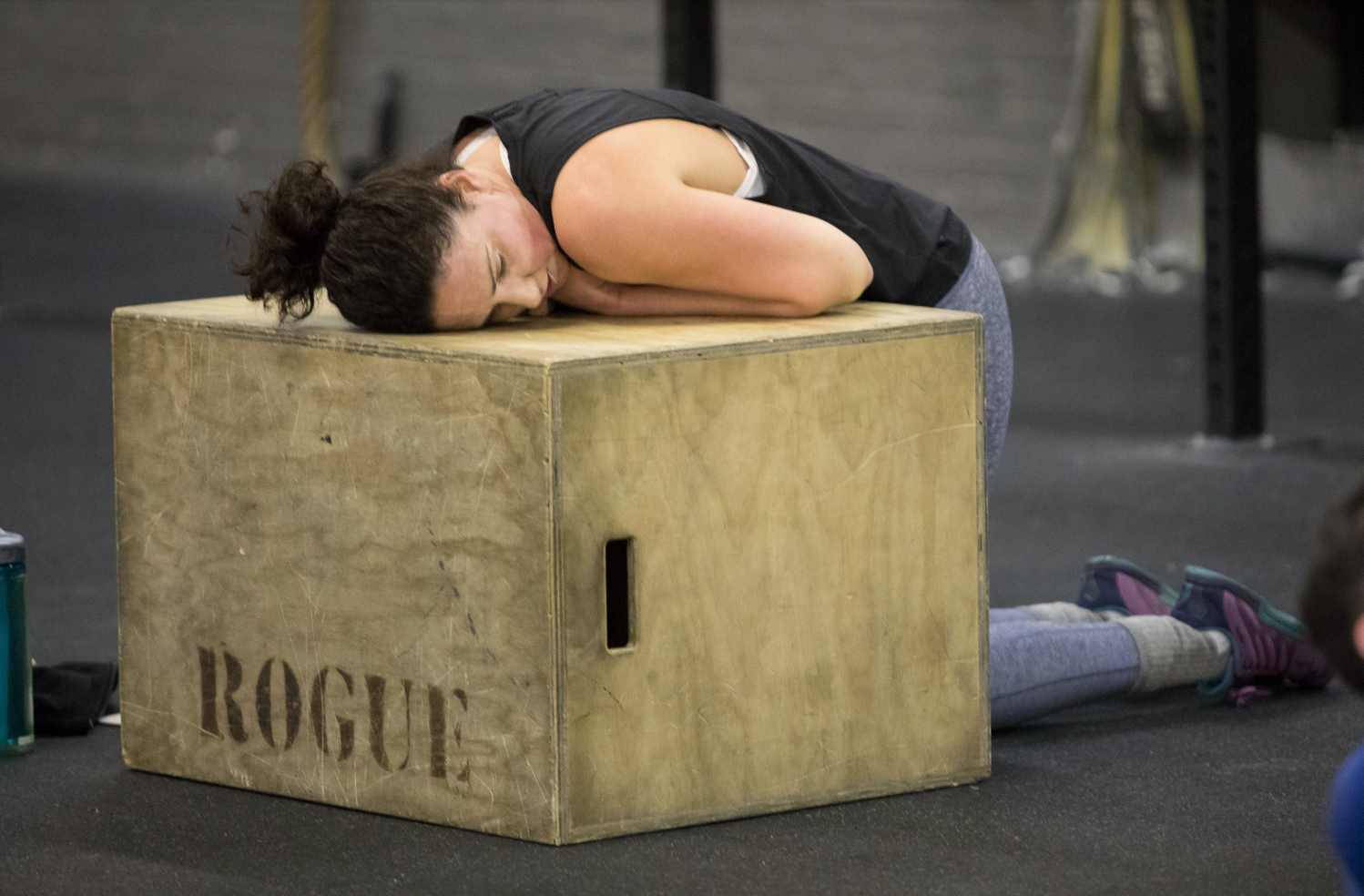
Photo by Thaís Oliveira.
I approached the box.
It was a height I hadn’t tried in at least a year, possibly more. But I was feeling good.
I did a couple quick step-ups to get a sense for the height. I don’t like going into a box jump blind.
Easy, I figured. Left foot, right foot, leap.
I didn’t even leave the ground.
“I feel box-jump fear almost every time I jump on a box.” —Kurtis Bowler, CrossFit Seminar Staff Flowmaster (CF-L4)
It’s a feeling every CrossFit athlete knows well. Whether jumping for the first time to a 30-in box or a 2-in plate, it’s confoundingly, inexplicably, paralyzingly terrifying. That’s why landing one makes you feel like you’re on top of the world.
There was very little chance I’d get hurt on that 18-in jump. It was to a foam box, so no worry of slicing my shins open. And even if I fell flat on my face, my ego would likely be more bruised than my body. Yet, all that confidence fizzled somewhere between knee flexion and extension, and when I tried to jump, I felt my stomach drop to the floor — all while remaining rooted to the ground.

Photo by Christopher Leh
“I felt fear (when) I used to go faster during box jumps, rebounding to jump back up. Over time, I learned to step down, take an extra second, and jump.” —Pablo Cervigni, CrossFit Seminar Staff Flowmaster (CF-L3)
But it’s not about fear. It’s about commitment.
It reminds me of being a kid playing on the rocky banks of Lake Superior. I grew up in a small city along Minnesota’s Northern Shore, and there’s a strip of beach that looks like someone blew up a quarry and swept all the pieces into one long pile at the water’s edge. Boulders and pebbles and everything in between, all mashed together and slicked with a film of wet sand and algae. It was an 8-year-old’s dream (and, I imagine, a parent’s nightmare).

Jody of All Kine CrossFit had “box-jump fear” — so she painted her box with unicorns and other characters that make her smile. Photo by Mark Tablang
How heroic I felt, leaping from stone to wobbly stone in my light-up sneakers. You could practically see a cape billowing in my wake.
“Swing your arms up hard and push through the tippy-toes.” —Zach Forrest, CrossFit Seminar Staff Trainer (CF-L4)
And somehow, at an age somewhere above 5 but definitely below 10, I instinctively understood that in order to leapfrog from rock to rock, I had to commit. There was no way of knowing if the stone between the one I was on and the one I was trying to get to was solidly planted, but going too slow was a sure way to find a wobbly spot. You had to just GO, using each step’s momentum to propel you onward, never tarrying in one spot too long.
I imagine it’s how rock climbers make those incredible transitions from crag to crag, or how those insane mountain bikers hurtle across gaps along narrow peak paths. You pause, you pick your way with caution, you think too much — you half-ass it — you fail.
“Visualize yourself on top of the box. Focus on the finish.” Jennifer Hunter-Marshall, CrossFit Seminar Staff Flowmaster (CF-L4)
You can’t half-ass a box jump, either.
It’s not a perfect comparison; there’s no momentum when you’re jumping from a dead stop. But the mindset? I argue it’s exactly the same. You just won’t make it if you leave any room for doubt.
After my failed attempt at the 18-in box, I considered calling it a night. I’d just finished a tough workout, and who was I trying to impress, anyway?
“Find that threshold where your brain shuts up and your body can jump. Lower the box to be precisely where that height is . … From there, do a few box jumps and get confident. Then, push that threshold by adding another 10-lb plate. … The next day, try a few more jumps at the height you left off at the day before, but end by adding another 10-lb plate. Doing this for five minutes before or after a class will hopefully build that psychological threshold over time.” —Joe DeGain, CrossFit Seminar Staff Flowmaster (CF-L4)
But something made me give it another shot.
I don’t know what happened; I just jumped before my brain could catch up. And when it finally did, I was on top of the box.
On top of the world.
“The CrossFit program consistently challenges us to embrace tasks that we are not very good at. We label those ‘weaknesses.’ A goal of our program is to improve those weaknesses or make it so those challenges do not debilitate us.” —Chuck Carswell, CrossFit Seminar Staff Flowmaster (CF-L4)
Cover photo by Aryan Barto